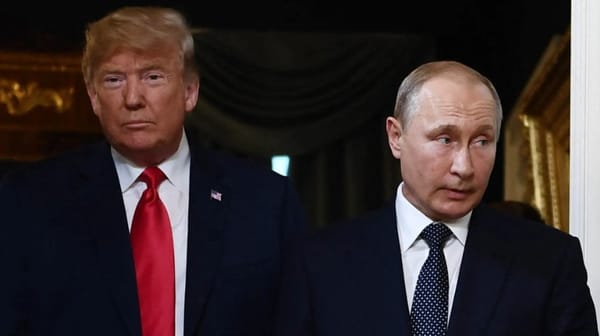Venezuela Resumes Oil Exports Amid U.S. Tariffs: A Test of Sanctions and Strategic Alliances

Introduction
Venezuela has resumed oil exports after a week-long hiatus triggered by U.S. President Donald Trump’s imposition of a 25% tariff on countries purchasing its crude. Tankers are once again loading at Venezuelan ports, with shipments bound for major consumers like India and China, defying ongoing U.S. sanctions aimed at isolating Nicolás Maduro’s regime. This development underscores the limitations of unilateral sanctions in a multipolar energy market and highlights the resilience of Venezuela’s strategic partnerships. Below is a detailed analysis of the crisis, its drivers, and its implications for global energy geopolitics.
Background: U.S. Tariffs and Venezuela’s Oil Economy
Trump’s “Secondary Tariffs”
On March 24, 2025, Trump announced tariffs targeting nations importing Venezuelan oil, framing the move as retaliation against Maduro’s “hostility” and alleged electoral fraud. The policy, effective April 2, imposes a 25% duty on all U.S. trade with countries buying Venezuelan crude. While legally unprecedented (and questioned by experts like Rapidan Energy[1]), the measure seeks to cripple Venezuela’s primary revenue source, which funds 95% of its export earnings[2].
Venezuela’s Precarious Oil Dependency
- Pre-Tariff Exports: Venezuela exported 557,000 barrels per day (bpd) in January 2025, with China (480,000 bpd), the U.S. (250,000 bpd), India (63,000 bpd), and Europe (44,000 bpd) as key buyers[3][4].
- Debt to China: Venezuela owes Chinese state banks $10 billion, with oil shipments serving as the primary repayment method[2:1].
The Tariff Fallout: Panic and Adaptation
Initial Disruptions
- Port Suspensions: From April 1–7, loadings at Venezuela’s main oil port, José, halted as buyers like Reliance Industries (India) and Chinese teapot refiners paused purchases[5][6]. Tankers anchored offshore, awaiting clarity on tariff enforcement[3:1][7].
- Market Reactions: Brent crude prices dipped 2% on fears of reduced Venezuelan supply, while U.S. Gulf Coast refiners scrambled for heavy crude alternatives like Canadian oil[8].
Resumption of Exports
By April 9, PDVSA had restarted loadings after buyers received assurances from intermediaries and adjusted to the new reality:
- Key Shipments: Chevron (U.S.), Reliance (India), and Chinese intermediaries resumed cargoes, with tankers departing for destinations like Jamnagar and Shandong[3:2][4:1].
- PDVSA’s Strategy: The state oil firm reorganized operations to prioritize domestic refining, aiming to process 300,000 bpd domestically by late 2025 to offset export losses[3:3][9].
Regional and Global Implications
Latin America: Shifting Energy Dynamics
- U.S. Leverage Erodes: Despite tariffs, Venezuela’s exports to India and China continue, undermining Washington’s goal of isolating Maduro.
- Cuba’s Windfall: PDVSA increased crude shipments to Cuba to 80,000 bpd in April, leveraging regional alliances to mitigate sanctions[9:1].
Asia: Strategic Defiance
- China’s Calculated Risk: Chinese teapot refiners, reliant on Venezuelan Merey crude for 20% of feedstock, initially paused imports but resumed after securing discounts[6:1][8:1]. Beijing’s “Anti-Foreign Sanctions Law” provides political cover to defy U.S. pressure[8:2].
- India’s Pragmatism: Reliance, which imported 254,000 bpd in January, negotiated tariff exemptions for “essential” energy imports, ensuring continued access[6:2].
U.S. Challenges
- Enforcement Limits: The U.S. lacks jurisdiction to directly tax third-country oil trades, relying instead on retaliatory tariffs (e.g., on Chinese EVs) for leverage[8:3].
- Domestic Impact: Gulf Coast refiners face higher costs as Venezuelan heavy crude (previously 235,000 bpd) is replaced by pricier Canadian and Mexican grades[8:4].
Venezuela’s Survival Strategies
Economic Adjustments
- Tax Hikes: Corporate taxes rose to 25%, and progressive income taxes were introduced to offset oil revenue losses.
- Debt Negotiations: PDVSA is renegotiating terms with Eni and Repsol to retain European partners under U.S. sanctions waivers[9:2].
Geopolitical Maneuvering
- Russia-Iran Axis: Venezuela increased oil-for-arms swaps with Iran, receiving drones and missile parts in exchange for crude[8:5].
- BRICS Outreach: Maduro seeks expanded trade in local currencies with BRICS nations to bypass dollar-based sanctions.
Future Outlook: Scenarios and Risks
Scenario 1: Temporary Respite (2025–2026)
- Status Quo: Exports stabilize at 400,000 bpd as China and India absorb discounted barrels. U.S. tolerates limited trade to avoid inflation spikes.
- Risk: Chevron’s exit by May 27 could cut U.S. imports, tightening heavy crude supply.
Scenario 2: Collapse (2026–2027)
- Trigger: Sustained $50/barrel prices and tariff enforcement slash Venezuela’s output to 300,000 bpd, triggering hyperinflation and regime instability.
- Risk: China writes off Venezuelan debt, pivoting to Iranian and Russian suppliers.
Scenario 3: Diplomatic Thaw (2026–2028)
- Election Shifts: A U.S. administration change leads to sanctions relief, reviving Venezuelan production to 1 million bpd via foreign investment.
Conclusion
Venezuela’s oil export resumption amid U.S. tariffs reveals the diminishing efficacy of unilateral sanctions in a fragmented global order. While Trump’s measures have injected uncertainty, strategic buyers like China and India continue to prioritize energy security over compliance. For Caracas, the crisis underscores the urgency of economic diversification and geopolitical hedging. As PDVSA’s restructuring unfolds, the world watches whether Maduro’s regime can outmaneuver sanctions—or if the oil lifeline will finally snap.
https://www.cnbc.com/2025/04/01/trump-venezuela-oil-tariffs-unprecedented-increase-trade-uncertainty-.html ↩︎
https://www.nytimes.com/2025/04/04/business/trump-venezuela-oil-tariffs-china.html ↩︎ ↩︎
https://www.reuters.com/markets/commodities/venezuelas-oil-flows-again-after-week-panic-2025-04-09/ ↩︎ ↩︎ ↩︎ ↩︎
https://finance.yahoo.com/news/venezuelas-oil-flows-again-week-195005801.html ↩︎ ↩︎
https://energiesnet.com/us-tariffs-cripple-venezuelas-oil-exports-as-china-and-india-withdraw/ ↩︎
https://economictimes.com/industry/energy/oil-gas/venezuela-oil-import-impact-on-india-25-tariff-april-2-us-president-donald-trumps-new-trade-twist-may-shake-up-indias-oil-import-cost-game-and-inflation/articleshow/119455466.cms ↩︎ ↩︎ ↩︎
https://www.marketscreener.com/quote/stock/CHEVRON-CORPORATION-12064/news/Venezuela-s-oil-flows-again-after-a-week-of-panic-49577964/ ↩︎
https://www.kpler.com/blog/trump-targets-venezuela-to-pressure-china-reshaping-heavy-crude-flows ↩︎ ↩︎ ↩︎ ↩︎ ↩︎ ↩︎
https://www.indexbox.io/blog/venezuelan-oil-exports-resume-amid-us-sanctions/ ↩︎ ↩︎ ↩︎




